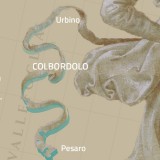
There are different ways of looking at a territory, and certainly the imagination is essential for everyone; also for the geographer, the naturalist, the historian, the surveyor, the poet, the anthropologist or the artist.
The Park of the Muses and Nymphs is a project of reading the territory, a filter through which to look at the landscape, trying to combine different looks by binding them tightly with the thread of imagination and poetry. Not only with the imagination, but starting from the traces left by the many characters and the many events of the lands of Vallefòglia, which create continuous references between one place and another.
Due to the transformation of the territory, today we are unable to read the ancient harmony, but it is traceable in numerous themes that allow new paths every time, even through the same places.
The center of gravity of the Park shifts attention from the two main centers of Pesaro and Urbino to the Vallefoglia area and expands towards the two ends of the province ...
The dominant theme that makes it possible to resonate the entire valley of its ancient unity is that of the Muses and Nymphs. We find them in Pesaro, in Sant’Angelo in Lizzóla, in Urbino. They are muhse or nymphs depending on the cultural context. But looking at Vallefòglia with their eyes it is possible to tell of lands where the activities of human wisdom, art, poetry and nature have found a balance still perceptible today, even in places devastated by war or transformed by progress.
We therefore trace them in art and poetry but equally in nature: landscape and water have therefore been identified as additional themes in which the Nymphs and Muses live and manifest themselves, allowing a comparison with those who have observed the landscape and "Portrait" in the past: Mingucci and Liverani.
They are dominant themes throughout the territory but they also to leave room for many others.
Like the ribbon of the muse Clio, the "Muse of History" of Giovanni Santi, we follow the movement of the Foglia river and the traces of the water (in which the Nymphs live), to understand how the history of the Foglia valley changes its course and its landscape, but drag immortal cultural references with it.
In the pictures of the starting page of the walkscape, on the right you will find the Muse Clio, the muse of history, painted by Giovanni Santi between the year one thousand four hundred eighty-five and ninety, stands in front of a rock; it is related to nature.
In the version later placed in the Tempietto delle Muse in the Ducal Palace of Urbino (and today at Palazzo Corsini in Florence) it has lost the fluttering ribbon, present instead in the design version. Still in the images on the starting page of the walkscape on the left you will find the pen version which is now in London, in the Royal Collection.
We imagined that the movement of the Musa ribbon was like that of the river that crosses the Foglia valley and combines culture and nature, history and legends ..
How to visit the park
The park is built through numbered and georeferenced stages, even if it is not necessary to follow the proposed order, so that no one gets lost. In reality, the best way to get to know a territory is to get lost.
To find the right mediation we propose you to follow itineraries following your interests, your intuition, your curiosity. You can find them on the home page on almalòci.com
But it is more interesting that these and other routes are redesigned by each traveler within the Park of the Muses and Nymphs, discovering new references and references with our texts and commented images everywhere.